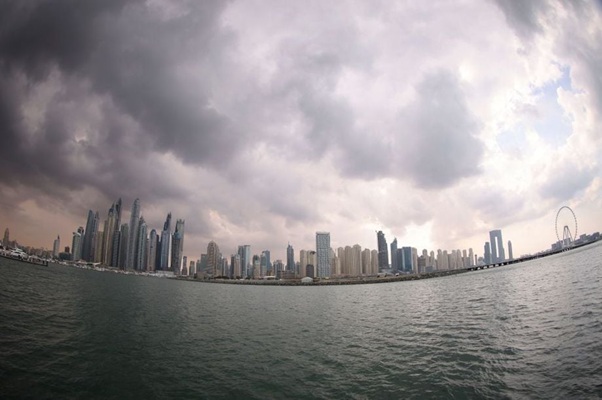UAE Weather: Rain and wind bring long-awaited cooldown

The UAE experienced a notable shift in weather this week, as unstable conditions brought heavy to moderate rainfall, gusty winds, and cooler temperatures to several emirates.
The National Centre of Meteorology (NCM) attributed the sudden change to a surface low-pressure system interacting with an upper-air trough, both of which contributed to increased cloud cover and atmospheric instability. Rainfall was reported across Abu Dhabi, Dubai, Sharjah, and the northern and eastern regions, including Ras Al Khaimah and Fujairah.
A welcome cooldown
While the UAE is no stranger to abrupt weather shifts, especially during transitional seasons, the recent rains brought with them a noticeable drop in temperature — a welcome relief for many residents following a prolonged period of intense heat. The hottest temperature on Sunday reached 39.3°C in Al Shawamekh (Abu Dhabi), while the coolest dipped to 18.1°C in the mountains of Ras Al Khaimah.
This dip hints at the arrival of milder conditions, though meteorologists warn that instability is likely to persist through the week, with further rainfall and wind events anticipated.
Rising concerns about safety and preparedness
The NCM has issued multiple alerts cautioning residents to stay away from valleys (wadis), low-lying areas, and roads prone to flash flooding. Motorists have also been advised to drive carefully and avoid water-logged routes. These warnings reflect a growing awareness of the country’s vulnerability to sudden, localized flooding — especially in urban areas with limited drainage infrastructure.
The event also underscores the importance of weather readiness in the UAE. While the country has made strides in improving its forecasting systems and public communication, events like these test the efficiency of early-warning mechanisms and emergency response capabilities.
This week's unusual weather aligns with a broader pattern seen across the region, where climate variability is leading to increasingly unpredictable weather events from intense rainfall and flooding to dust storms and extreme heat. Scientists have long pointed to the Gulf region's vulnerability to the effects of climate change, including shifts in rainfall patterns and rising sea levels.
While the recent rain was relatively manageable and even welcomed in some areas, it may serve as a reminder that climate resilience and infrastructure adaptation will be critical to weathering more severe events in the future.
The recent spell of wet and windy weather across the UAE has brought relief from the heat but also raised important questions about preparedness and resilience. As the country navigates an era of more unpredictable climatic events, coordination between meteorological services, local authorities, and the public will be key to ensuring both safety and sustainability.























